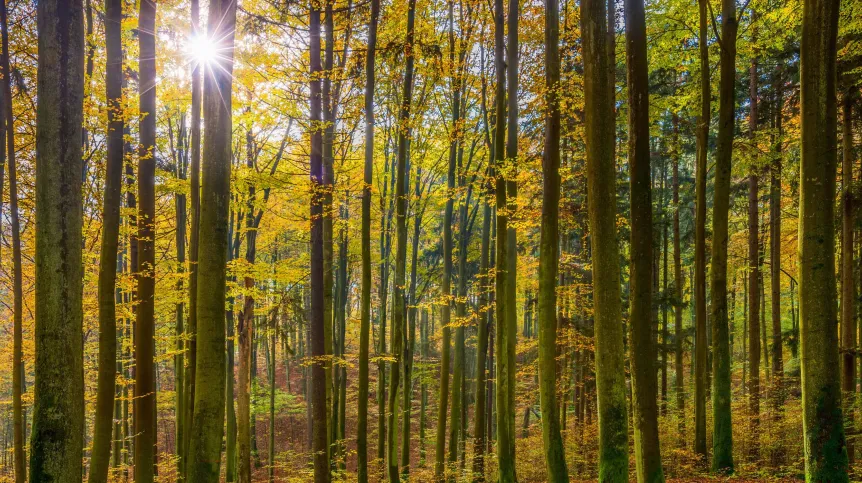
Many plants, for example beeches, produce seeds irregularly, every few years. The question is how plants across the continent know whether a given year will produce seeds or not. Now researchers - led by a Polish scientist - show that it may depend on the weather around the summer solstice.
A team of researchers from Poland, France, the UK, the Netherlands and New Zealand, led by Professor Michał Bogdziewicz from the Adam Mickiewicz University in Poznań, published their research results in Nature Plants, the Adam Mickiewicz University reports in a press release.
There are plants with 'lean' years, when there are few or no seeds, interspersed with 'abundant' years, when there are so many seeds that the branches bend under them. And there is no obvious mathematical rhythm in the order in which the respective year occurs.
'Amazingly, these interannual fluctuations are synchronised between individual plants and often cover hundreds or even thousands of kilometres', says Professor Michał Bogdziewicz, quoted in the Adam Mickiewicz University's press release.
What is the purpose of this strategy of alternating seed years and waiting years? There is a method to this madness. If millions of trees produce seeds at the same time, there is a greater chance that animals that feed on these seeds will not be able to eat them all, but will, for example, move them somewhere and forget about them - allowing the plants to reproduce and conquer new areas.
Years of abundant reproduction are usually followed by years of no seeds. Plants need them, too. Thanks to this, plants not only collect resources for the next abundant seeding summer, but also starve the consumers of their seeds. In the face of several years of starvation, the population of these animals decreases, so the chance increases that the individuals that survive will not be able to eat all the seeds.
Thus, the synchronous cycle of seed abundance and scarcity causes significant changes in the environment. The strategy used by trees results in huge fluctuations in rodent numbers, animal migrations and an increase in the number of diseases transmitted by wild animals.
The question is what is the algorithm that plants from different parts of the continent - without communicating with each other - use to jointly determine whether to produce seeds or not. Scientists assume that it has to do with the weather.
An example is European beech. Beech trees in Spain, the UK, Sweden, Romania, Poland and Greece maintain the same rhythm despite significant climatic differences between the south and north of Europe. This is surprising because many other processes - such as the start of flowering - generally start faster in a warmer climate. How do beech trees coordinate 'reading' the weather despite such great distances?
Research by Professor Michał Bogdziewicz's team has led to the discovery of an astronomical clue that enables this precise synchronization. It is the maximum relative length of the day at the summer solstice. This is the cue that the European beech uses to generate the ecological event with the greatest spatial synchronisation on the continent.
It turns out that all plants decide to reproduce based on the weather in June and July.
'We were inspired by a recent study published in Science. Researchers from Switzerland found that the effect of temperature on leaf dieback varies depending on whether we consider the period before or after the summer solstice. The summer solstice is the longest day of the year, which always occurs on the same day, at the same time throughout the hemisphere', explains Dr. Valentin Journé, a researcher working at the Adam Mickiewicz University in Poznań, quoted in the press release.
The researchers observed the detailed changes in the level of response of beech trees to temperature and found that trees across Europe suddenly started to 'read' the temperature on June 21st, just after the summer solstice.
'The sudden response of beech trees is truly remarkable. As the day begins to shorten, after the summer solstice, beech trees across all corners of Europe open their +window of sensitivity+. What is jaw-dropping is that the variation in day length during this time is genuinely small - we are talking about a few minutes over a week. However, the trees seem to be able to recognise this difference', says Dr Jakub Szymkowiak from the Adam Mickiewicz University in Poznań. (PAP)
PAP - Science in Poland
lt/ bar/ kap/
tr. RL













